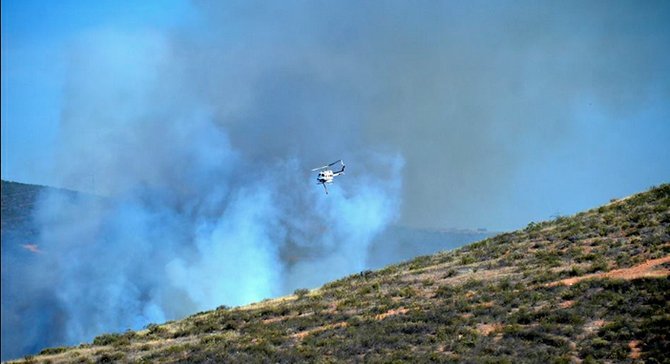 Facebook
Facebook
 X
X
 Instagram
Instagram
 TikTok
TikTok
 Youtube
Youtube

Environmental groups have claimed victory in a lawsuit against Pardee Homes to prevent what they feel would be irreparable harm to the San Diego River in Santee.
John Buse, attorney for the Center for Biological Diversity, says the two sides reached an agreement that will require the developer to redesign the massive housing development and remove potential environmental impacts. In addition, representatives from Pardee Homes agreed to sell a large portion of nearby land to local governments for use as open space.
Prior to the settlement, construction of the Castlerock development included 280 single-family homes, nearly 150 multifamily units, and a park on the border of Santee and the City of San Diego. Despite complaints from residents and environmental advocates, the two city councils approved the project. The City of San Diego announced its plans to annex the land to Santee on account of the lack of infrastructure.
Then, on November 6, 2013, conservation groups Preserve Wild Santee, the Center for Biological Diversity, and the California Chaparral Institute filed a lawsuit against Pardee Homes and the cities of San Diego and Santee. The lawsuit alleged that the project could destroy wetlands and wipe out wildlife and plants near Quail Creek Canyon, part of the San Diego River watershed. To make things worse, claimed attorneys, the development was in the middle of an area ripe for wildfires.
"San Diego has had seven years to fix the broken parts of its conservation program, including its poor protection of vernal pools and insufficient funding,” said Buse at the time of the lawsuit. “We need smarter planning and more protection for people and wildlife, not more mindless sprawl.”
After the redesign, the project will head back to the city councils for approval.


Environmental groups have claimed victory in a lawsuit against Pardee Homes to prevent what they feel would be irreparable harm to the San Diego River in Santee.
John Buse, attorney for the Center for Biological Diversity, says the two sides reached an agreement that will require the developer to redesign the massive housing development and remove potential environmental impacts. In addition, representatives from Pardee Homes agreed to sell a large portion of nearby land to local governments for use as open space.
Prior to the settlement, construction of the Castlerock development included 280 single-family homes, nearly 150 multifamily units, and a park on the border of Santee and the City of San Diego. Despite complaints from residents and environmental advocates, the two city councils approved the project. The City of San Diego announced its plans to annex the land to Santee on account of the lack of infrastructure.
Then, on November 6, 2013, conservation groups Preserve Wild Santee, the Center for Biological Diversity, and the California Chaparral Institute filed a lawsuit against Pardee Homes and the cities of San Diego and Santee. The lawsuit alleged that the project could destroy wetlands and wipe out wildlife and plants near Quail Creek Canyon, part of the San Diego River watershed. To make things worse, claimed attorneys, the development was in the middle of an area ripe for wildfires.
"San Diego has had seven years to fix the broken parts of its conservation program, including its poor protection of vernal pools and insufficient funding,” said Buse at the time of the lawsuit. “We need smarter planning and more protection for people and wildlife, not more mindless sprawl.”
After the redesign, the project will head back to the city councils for approval.
Comments